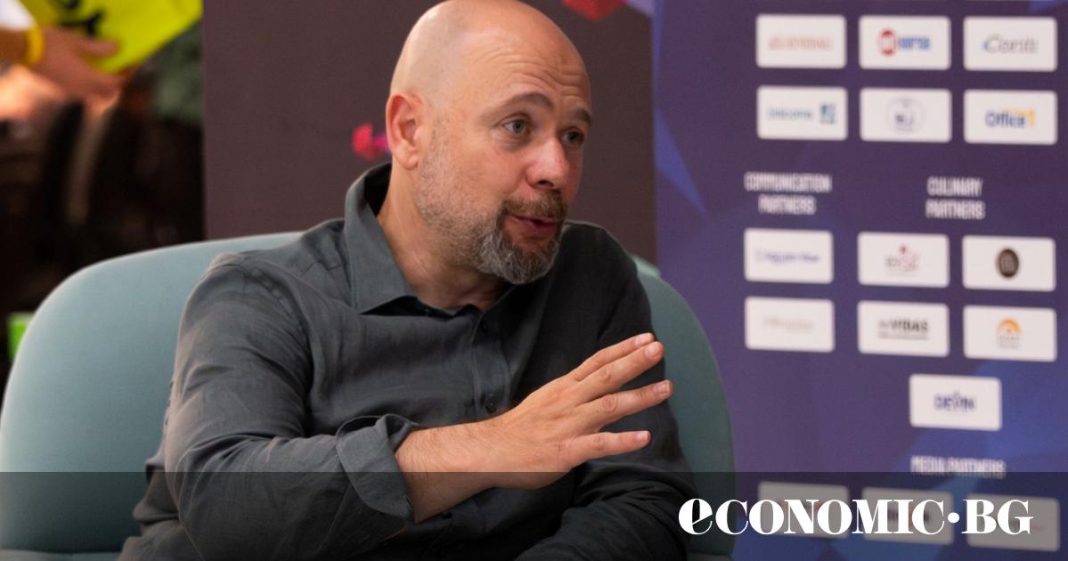A Bulgarian smart device company with a market capitalization of $1 billion, attracting increasing attention on Europe’s largest stock exchange and continuing to innovate. This is how Shellie Group can be described in a nutshell.
We spoke with Dimitar Dimitrov, founder and CEO of Shelly Group, about the company’s development, its ambitions for its newly created chip, its plans for a high-tech factory in Plovdiv, and its vision for the future of AIoT.
Mr. Dimitrov, you say that market capitalization should never be a goal for a company. However, it is a signal. What does Shelly Group’s valuation of over $1 billion signal?
It signals that the company has reached a level where it has the trust of both investors and customers. Reaching this figure is a kind of recognition and, at the same time, provides opportunities for development. It is a sign of trust in the company and shows where it currently stands in the world – we are transforming from a micro-company into a small company.
How do you explain the jump in shares in recent months?
First, the main thing is that for three consecutive quarters since we went public, we have been delivering and achieving the results we promised. In other words, we have a good track record that tells investors every time: „Here, we said this figure, we achieved this figure and this result.“ We are seeing 30% growth in sales with very good profits. So the first thing is that we deliver what we promise, and this is visible every quarter.
The second thing is that more and more investors are learning about us. We are seeing a lot of interest from Swedish investors and from the northern countries—whereas before there was no one, now there are over 700 investors who have bought shares in recent months. These are not impulse purchases – they have been watching the company for a long time and at some point decided to buy shares.
Four years after listing in Frankfurt, what horizons has this move opened up for the company?
It has opened up the opportunity to enter a much more liquid market with many more investors who hold larger portfolios. The Bulgarian stock exchange is a great market to start with, but it is limited due to the size of the country. In the beginning, after we went public in Germany, almost a year and a half passed without anything happening—this was a period when we had to show that we were a company that was different from other companies, that we were really pursuing serious results.
Have you thought about going public on the New York Stock Exchange?
It sounds attractive because the valuations are higher there. We have thought about it, but we have not set it as a goal. Listing a European company in the US is not standard. I don’t know if investors in America would show as much interest in a European company – they believe more in their own growth.
Besides, it’s expensive. In Europe, we are under common European legislation with very few differences between countries, while in the US, listing and maintenance are incredibly expensive, plus the regulations are completely different.
Shelly already has its own chip. How did you come up with this idea?
It came from necessity. After we entered the market, we advanced with the technology and at one point reached the limit of the current chips. In order to continue miniaturizing the devices and maintain their flexibility, we needed something that was not available on the market.
It’s not a completely new chip that we created from scratch—we modified a chip from a company that had a good foundation, but it wasn’t enough for our needs. And since we buy in large volumes, this allows us to negotiate with custom manufacturers specifically for us.
Where did the development take place and what are the main advantages?
It took place in Taiwan. The main advantages are its size – 5×5 mm, which has all the necessary components, flash memory, and the ability to control various external peripherals. Before that, we needed something that was a centimeter and a half square.
This allowed us to optimize consumption and space, so you can create much more compact and powerful devices.
How much time and financial resources did it take to create the chip?
About nine months, which is a very short period, mainly because we were working on an existing foundation that we built upon. In terms of investment, the development cost about half a million leva.
What are the long-term ambitions for the chip?
We are already working on chips that will be released at the end of 2026 and in 2030. The idea is that this chip will be used not only in our products, but also in products from other manufacturers. For example, manufacturers of electrical appliances (refrigerators, washing machines, stoves) are very good at the „hardware,“ i.e., how the appliance looks, but not so good at smart technologies. We offer them the chip to make their appliances connected and „smart.“
And how will you offer it to them?
Will it come with some kind of software support? Yes, that’s the idea—it will come with software support, which is our job. Their job is to make the appliance, as they have done so far. We already have limited contracts and 5–6 products are on the market.
We are now launching our first product for cars, which is based on our chip and also has much broader capabilities than the current market offering.
What is the current production volume and how do you plan to expand over the next 3 – 5 years?
Currently, it is around 20 million per year. We hope that in three years it will be at least three times more. A lot depends on which manufacturers come on board. If a washing machine manufacturer comes on board, the numbers are smaller. But if someone comes in who really produces something on a large scale, such as light bulbs and lighting fixtures, the consumption is huge. So I can’t say exactly, but at least for our needs it should be at least three times more.
Your production is currently based in China. Are you considering diversification?
Yes, at the end of this year or early next year we will be ready with a factory in Bulgaria, specifically for the production of modules. It will be in Plovdiv, where we will move the production of modules based on this chip. The chip itself will be supplied from Taiwan, and production will take place in Europe. This way, there is no contact with the supply chain for more sensitive manufacturers.
Is the factory your own? Tell us a little more about it.
Yes, it is our property. The goal is for it to be fully automated – one of the conditions was that no more than four people work in the factory, which should be able to produce tens of millions of modules per month. The technology allows for this, so we are currently working on it.
You have made several acquisitions in recent years. What was your motivation for these? And are you planning any new ones?
We acquired a Slovenian company (editor’s note: this refers to the €2 million deal for GOAP), mainly because we had no experience with Z-Wave technology, which is one of the oldest technologies for smart homes and smart buildings. We actively manufacture such devices. The second was not an acquisition of a company, but a purchase of assets from a company in liquidation – the Dutch lock manufacturer LOQED Smart Lock. The deal was extremely attractive – they had inventory worth more than the price the liquidator was asking.
We took a developed product with all the technical documentation and included it in our distribution lines. We are always open to new acquisitions. Since others see what we are doing, we often receive inquiries.
Currently, there is a German company that wants to divest part of its product line and is offering it to us. If we can agree on good terms, we would take the product rather than the company. But we don’t have any direct targets for entire companies.
Are you planning to expand your portfolio?
Constantly. This year, another 50 products, next year another 100. If we want to maintain our position and grow, the portfolio has to grow.
Right now, controllers are all the rage – tablets that replace wall switches. You remove the regular switch and put in a tablet without making any changes to the installation. You continue to use it as a light switch, but you can control multimedia and monitor your home’s energy consumption. It becomes a tablet for home control. It turns out that people prefer larger models. Now we are also launching a super small device – the size of a pill – that can measure temperature and pressure, control light bulbs, and act as a home extender.
How do you integrate artificial intelligence into your products?
We use it from several perspectives. It helps us analyze when an electrical appliance is about to break down—by monitoring energy consumption, we can determine the condition of the appliance before the breakdown occurs. We can warn the user that the refrigerator is about to break down or that they have left the lights on.
Another application is for creating automation scenes – customers can explain what they want, arrange multiple settings, and artificial intelligence creates the scene for them.
Given the continuous development of technology and trends toward connectivity, what is your long-term vision for the company’s position in the AIoT (Artificial Intelligence of Things) ecosystem and what do you expect its key role to be in 10 years?
We will create a range of technologies to support. But no matter how large, it is still a limited portfolio. So we are talking more about the possibility of everything around us being connected through it. One of the main trends will be medicine and connecting devices so that they can analyze user behavior and detect unusual behavior or factors that might indicate that the user should see a doctor.
I expect medicine and the smart home to change significantly over the next 10 years. We expect to be the technology provider rather than the manufacturer of the end device.
Translated with DeepL.
Източник: Economic.bg


